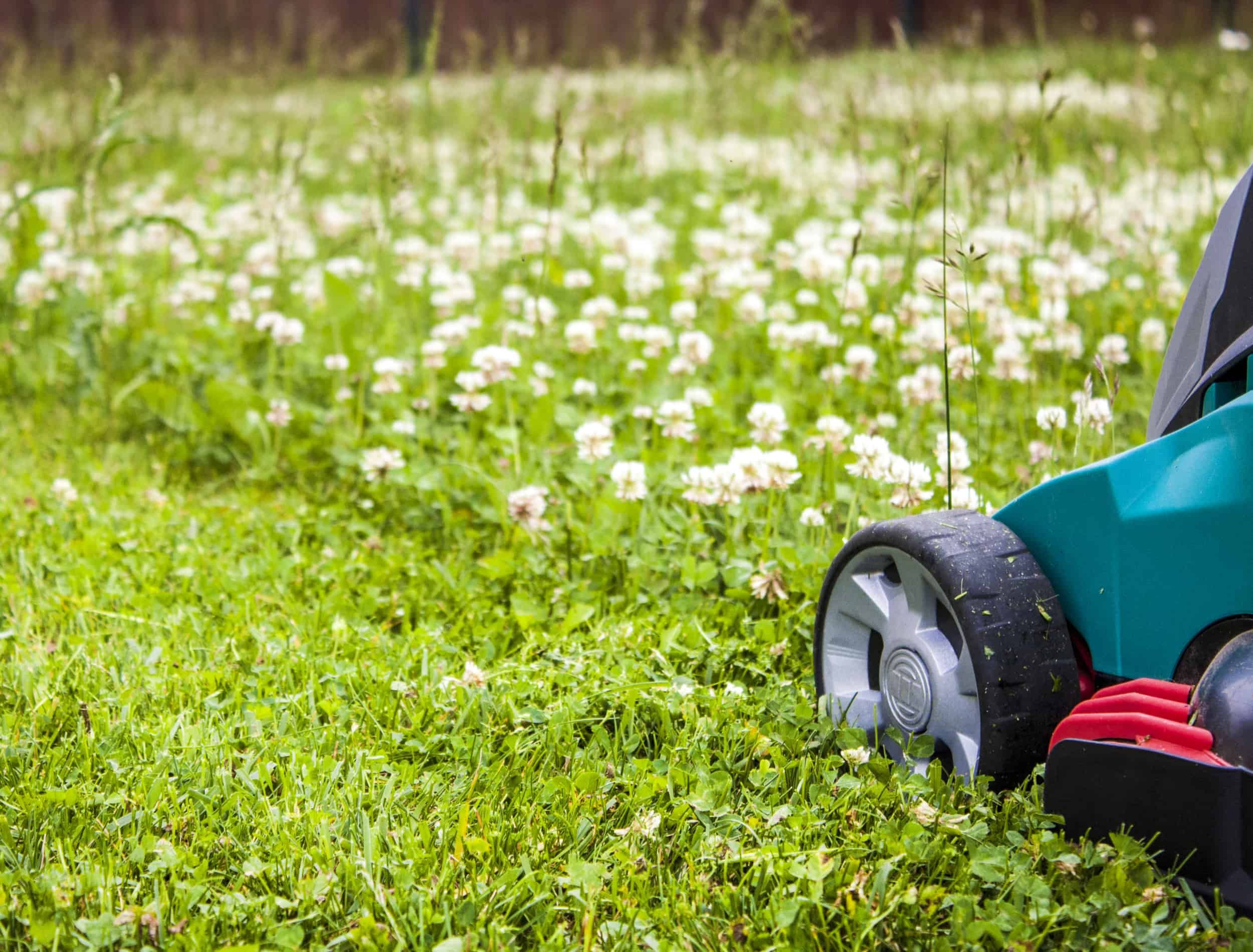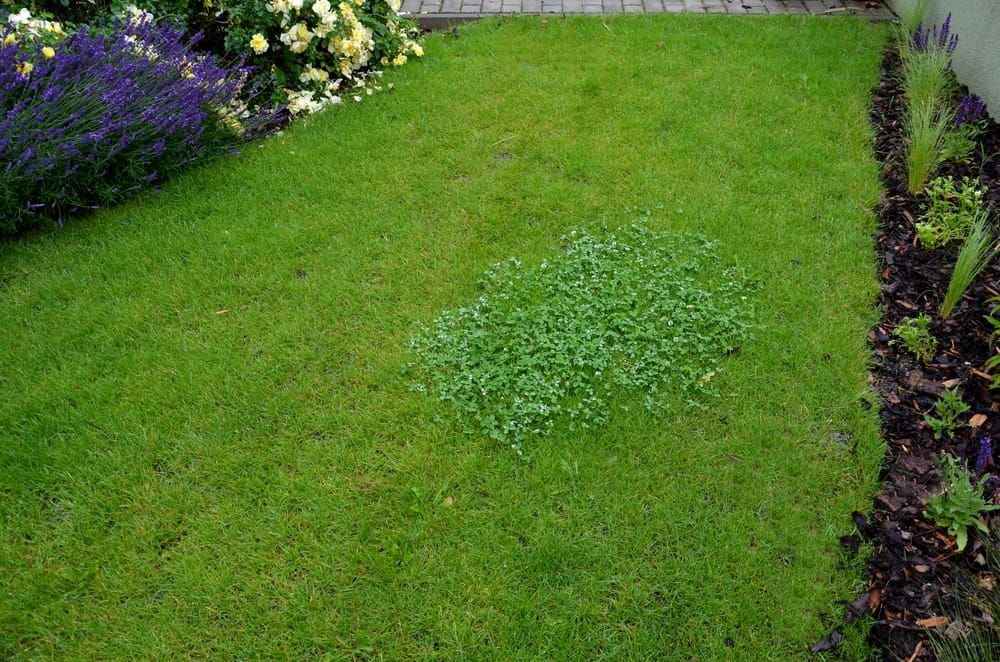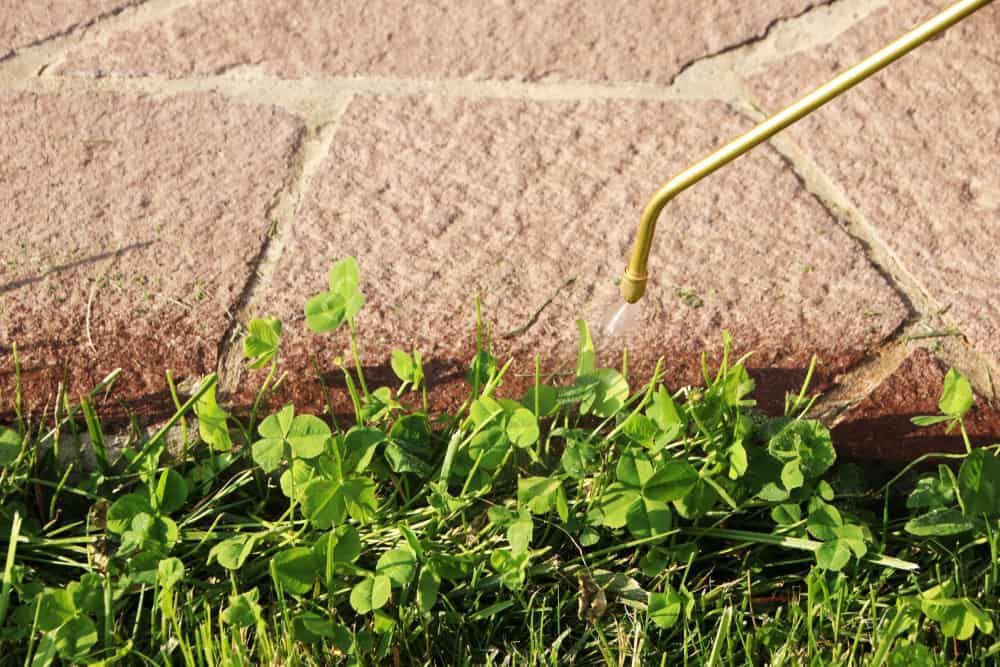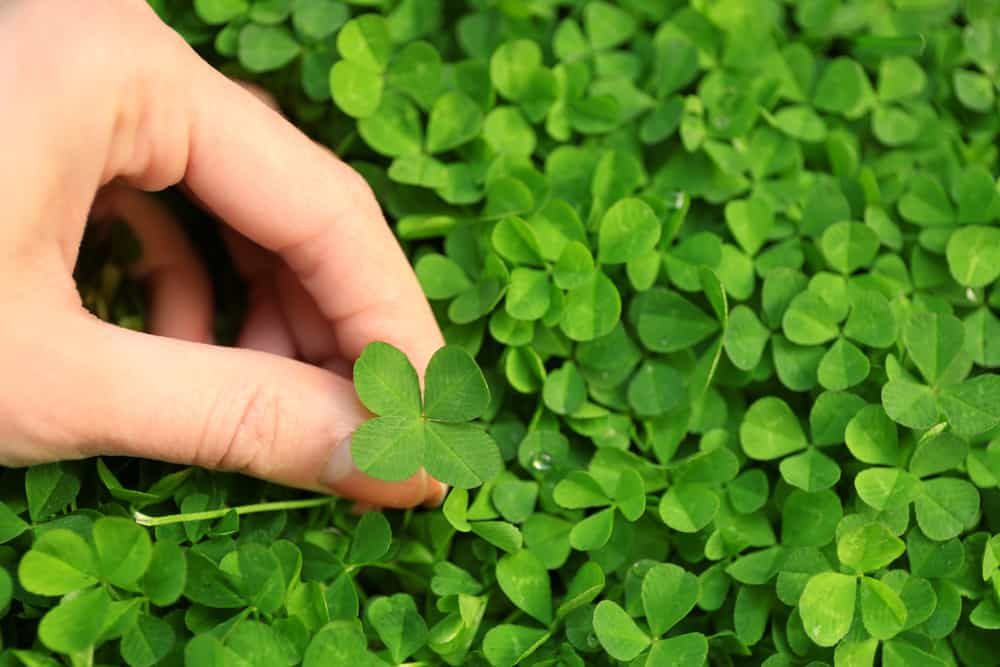Clover can be a nuisance if you're looking for a weed-free lawn. It grows rapidly, and before you know it, those white flowers have popped up everywhere, covering your nice green grass. The good news is there are ways to get rid of clover.
However, clover can actually benefit your yard and garden in many ways, including adding nitrogen to the soil, attracting bees, and as an extra bonus, you won't need to mow it as often as grass! So there are some things to consider before removing clover.
But if you are still interested in removing this weed, these are a few remedies using supplies you probably already have on hand. Read on to find out easy solutions and instructions on how to bring back your lawn.
Option 1 - Cover
Image credits: Beekeepx via shutterstock
caution: Using this method will kill any surrounding greenery or grass as well as the weeds.
List of Materials Needed
- A couple of large garbage bags OR a large tarp
- Rocks, or something to weigh it down
Step 1:
Lay down the tarp or garbage bag over the patch of clover/weeds/grass you want to get rid of. If it is a larger area, you may need more than one covering to be able to tarp the entire area.
Step 2:
Put your rocks, or other heavy objects on the corners of the covering to weigh it down. If you have enough, it's a good idea to place some in the middle of the tarp as well. This will help to keep the tarp from blowing away, but it will also keep it tighter to the ground so that the weeds will be without oxygen. This will cause anything under the covering to die.
Step 3:
Leave the covering on the ground for about two weeks to ensure you have killed all the clover and weeds.
Option 2 - Spray Solution
Image credits: photowind via shutterstock
caution: Using this method will kill any surrounding greenery or grass as well as weeds if the solution touches them.
List of Materials Needed
- One cup of white vinegar
- One cup of water
- A few drops of dish soap
- One spray bottle
Step 1:
Mix one cup of white vinegar, with one cup of water in a spray bottle.
Step 2:
Add a few drops of dish soap and shake the spray bottle a few times to mix the solution.
Step 3:
Spray the solution on the patch of clover you want to get rid of. The clover should brown and die within the next day or two.
Reapply the solution as needed. It may take a few applications until the patch you want has browned. You may need to pull the rest of the plant by hand to ensure you have removed all of the roots.
Option 3 - Remove by Hand
Image credits: Africa Studio via shutterstock
List of Materials Needed
- Shovel (optional)
- Trowel (optional)
Step 1
Loosen the soil around the patch of clover you want to remove. For larger areas, you may want to use a shovel to help with this.
Step 2
Grasp the clover by the base and pull up. Try to get the roots as well, or dig them up separately. If you leave behind any of the roots, you risk the clover returning. You have to make sure to get them all.
Removing Clover From Your Lawn
Clover has a lot of beneficial attributes, but sometimes it grows quickly and gets in the way. And there are a few DIY options if you are looking to remove it.
You could also look at buying chemical solutions to get rid of the clover. But, you may run the risk of introducing chemicals that may harm other plants and flowers that are nearby, so make sure to do your research before purchasing anything.
The tips above are helpful when you already have clover growing in your lawn, and you want to get rid of it or keep it from spreading through your grass. But there are some other tips to keep in mind so that the clover doesn't show up to begin with. One of the options is to keep your lawn a little longer. Clover will grow in areas where your grass is weaker, and clipping grass short makes it easier for clover to take over and spread. By mowing the grass to a length that is at least 2-inches or longer, clover can't get the sunlight it needs to thrive.
You can also fertilize your lawn, and keep the nitrogen levels higher. Not only will this help your grass grow, but clover thrives better than grass in low nitrogen areas.




